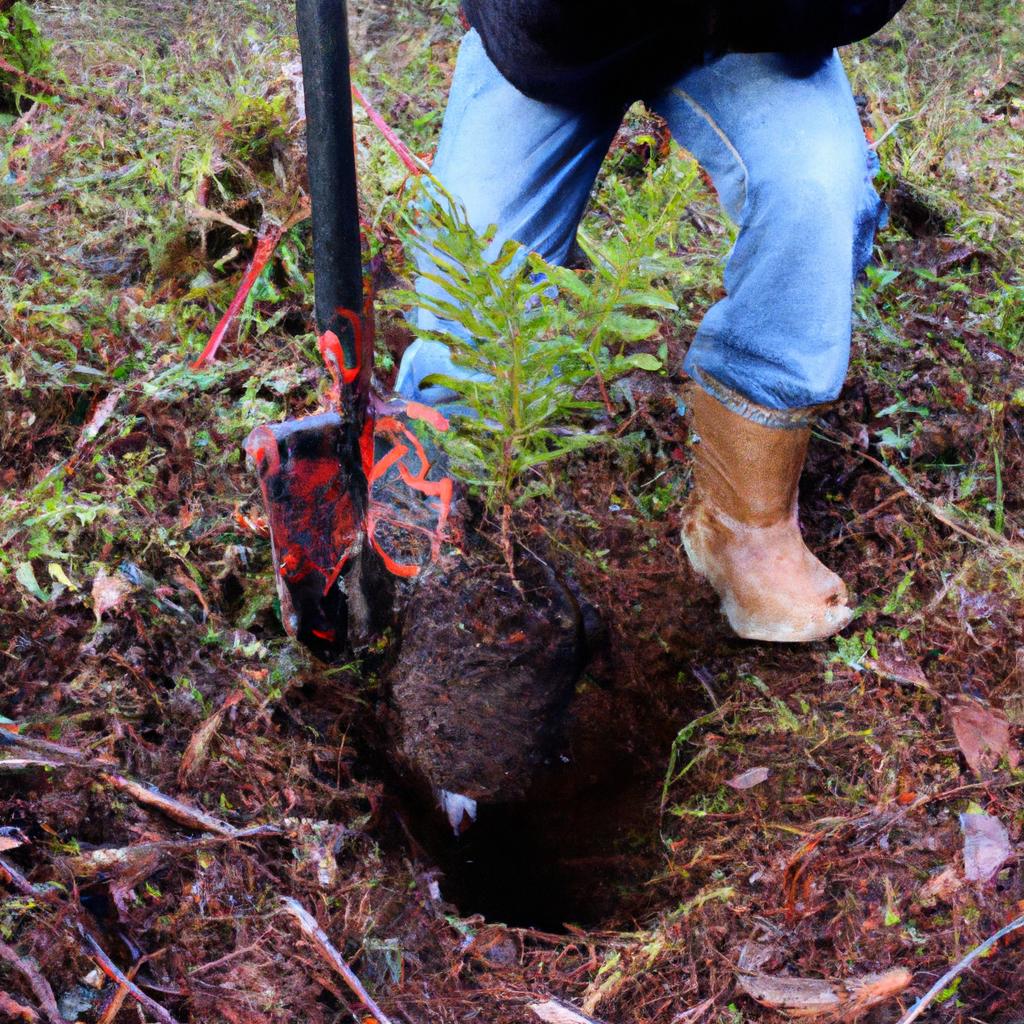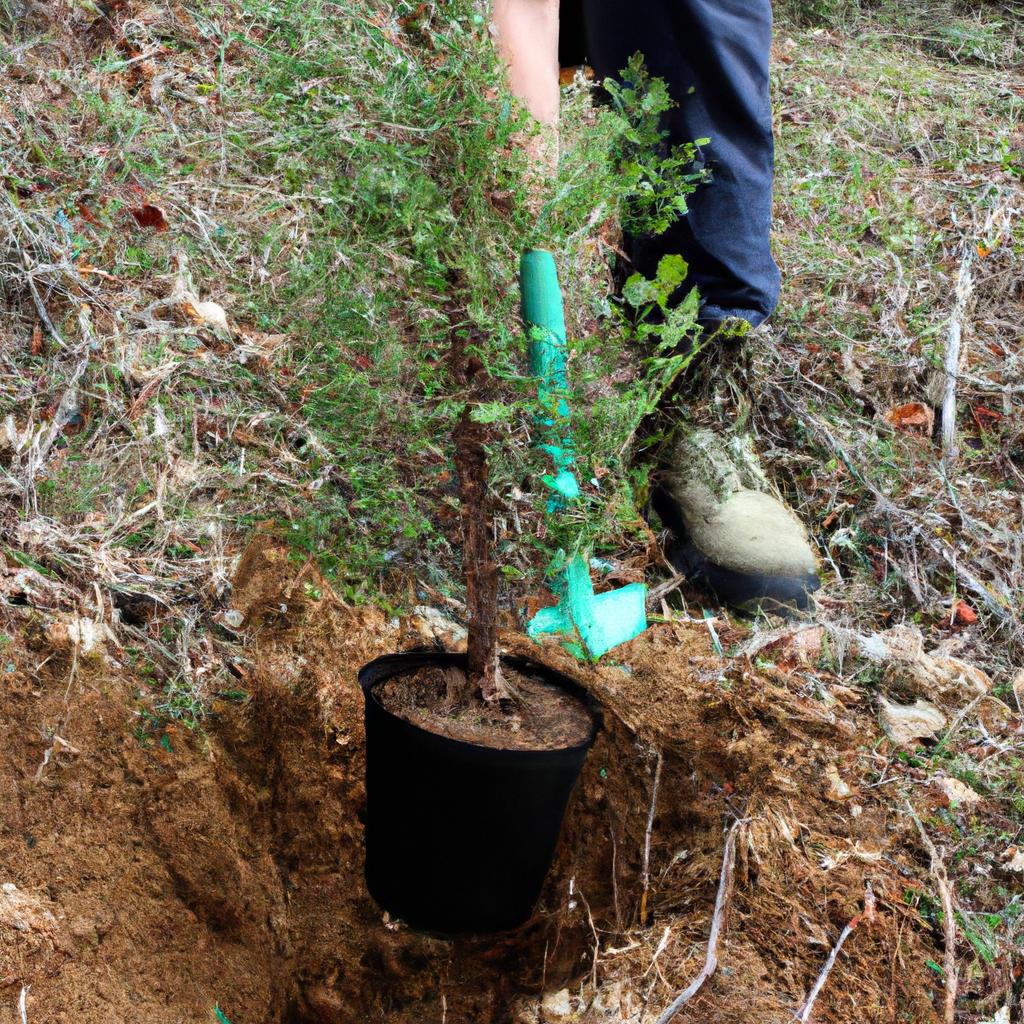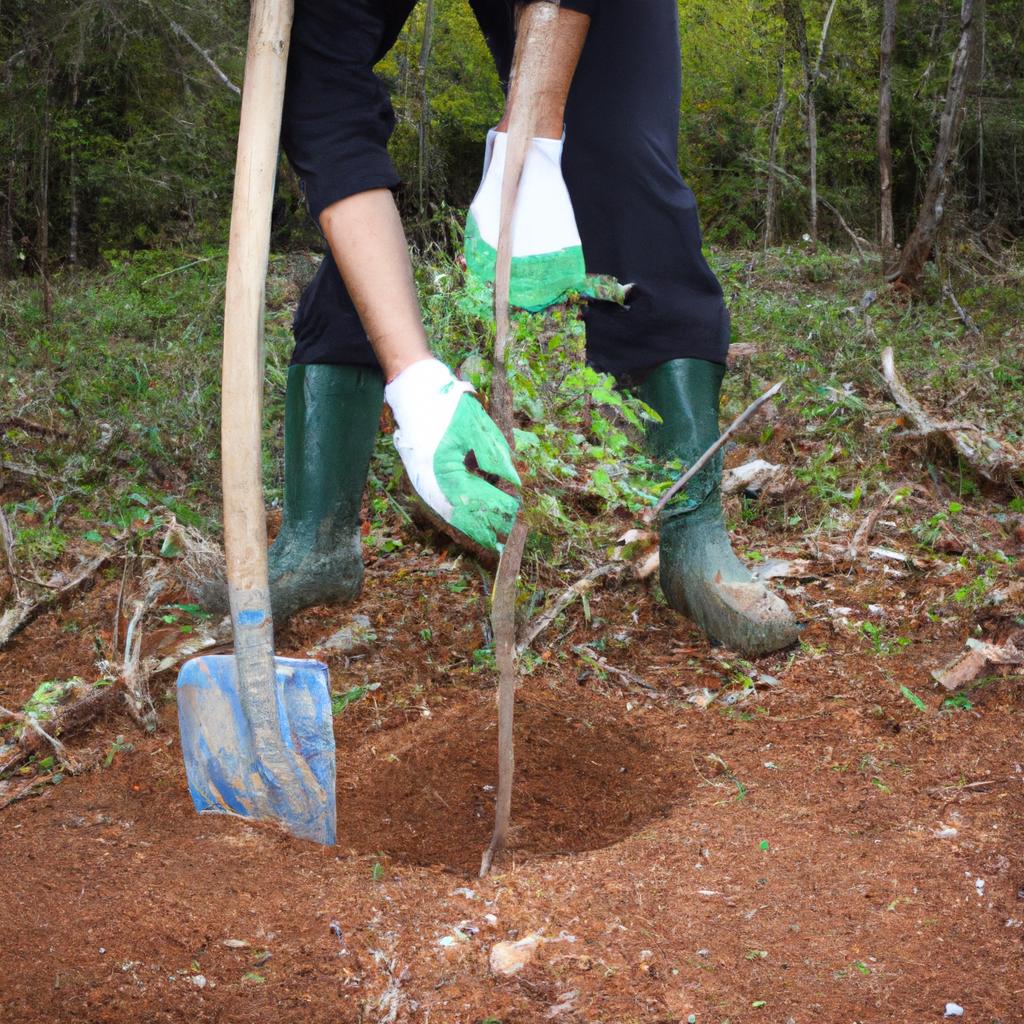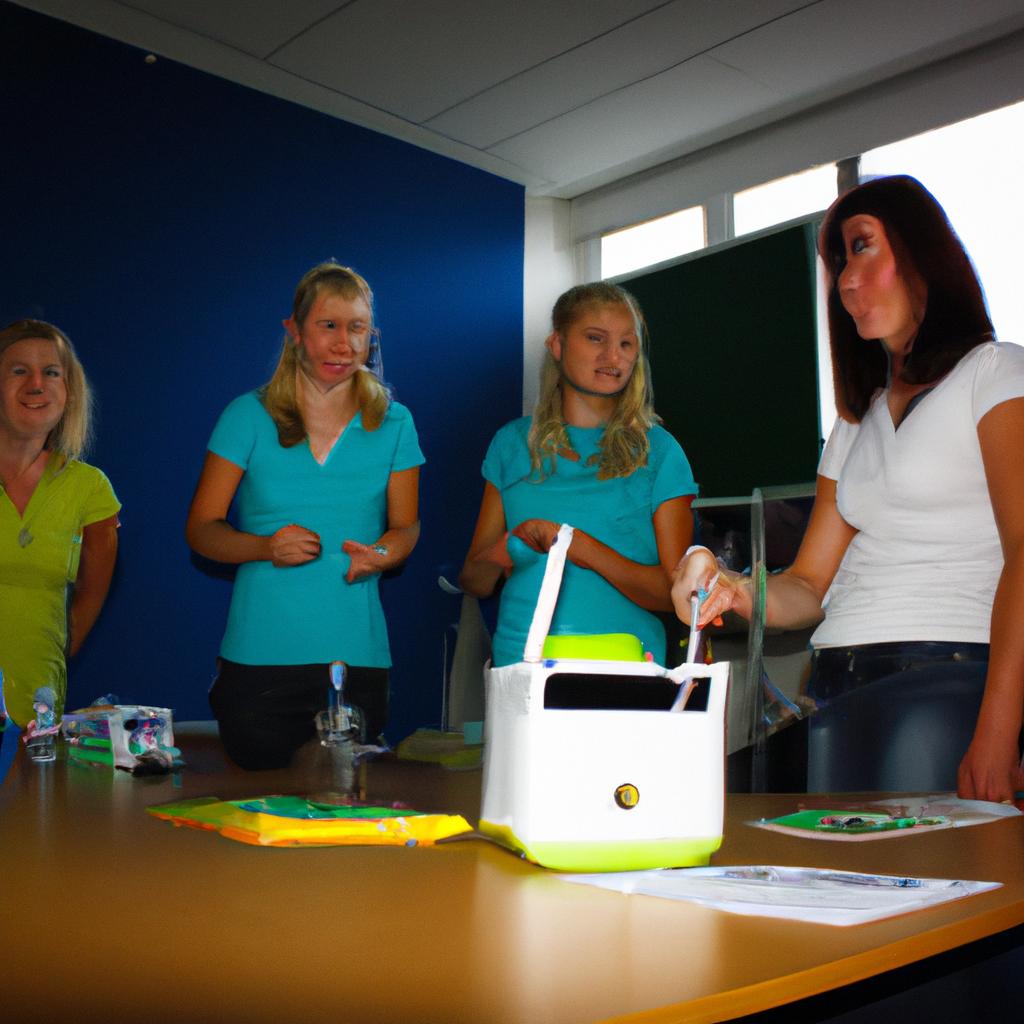Conservation in environmental education plays a crucial role in promoting sustainability, ensuring the preservation of our natural resources for future generations. By instilling an understanding and appreciation for ecological balance and resource management, individuals can actively contribute to sustainable practices in their everyday lives. For instance, consider the case study of a hypothetical community that implements conservation-focused educational programs within local schools. Through this initiative, students are exposed to various ecological concepts such as biodiversity, habitat preservation, and waste reduction. This not only enhances their knowledge but also empowers them to become environmentally conscious citizens who actively participate in conservation efforts.
In recent years, there has been growing recognition of the need to integrate conservation into environmental education curricula worldwide. As global challenges such as climate change and deforestation continue to threaten the delicate equilibrium of ecosystems, it becomes increasingly imperative to equip individuals with the necessary knowledge and skills to address these issues effectively. Conservation-based approaches aim to foster a sense of responsibility towards nature while encouraging critical thinking and problem-solving abilities among learners. By engaging students in hands-on activities like field trips or practical experiments, educators can create immersive learning experiences that deepen their understanding of ecological systems and inspire them to take action towards sustainable living practices.
Importance of Conservation in Environmental Education
Conservation plays a vital role in environmental education as it fosters an understanding and appreciation for the natural world, promotes sustainability, and encourages individuals to take action towards preserving our planet. To illustrate this, let us consider the case study of a local community that implemented conservation practices within their educational curriculum.
Firstly, incorporating conservation into environmental education provides students with real-life examples and hands-on experiences that deepen their understanding of ecological concepts. For instance, in this hypothetical scenario, elementary school students engage in activities such as planting trees or creating wildlife habitats on their school grounds. These practical initiatives not only enhance their knowledge about ecosystems but also instill a sense of responsibility towards the environment.
Furthermore, conservation-focused environmental education equips individuals with skills necessary for sustainable living. Through engaging lessons and interactive learning opportunities, students develop critical thinking abilities and problem-solving techniques related to resource management and waste reduction. This empowers them to make informed decisions regarding energy consumption, recycling habits, and eco-friendly lifestyle choices.
To evoke an emotional response from the audience:
- Engagement: Students actively participate in nature-based projects.
- Empowerment: Individuals gain confidence in making environmentally conscious decisions.
- Connection: Students establish a deeper connection with the natural world.
- Hopefulness: The implementation of conservation practices offers optimism for a greener future.
The following table illustrates how conservation-focused environmental education can evoke an emotional response among stakeholders:
| Emotional Response | Example |
|---|---|
| Excitement | Students feel enthusiastic about participating in outdoor activities such as tree planting or habitat restoration projects. |
| Empathy | By observing firsthand the impact of pollution on local ecosystems during field trips, students develop empathy towards endangered species and fragile environments. |
| Inspiration | Engaging with successful conservation stories inspires students to become advocates for change within their communities. |
| Responsibility | Encouraging a sense of responsibility for the environment fosters a commitment towards sustainable practices and long-term conservation efforts. |
In conclusion, incorporating conservation into environmental education is essential as it not only enhances students’ understanding of ecological concepts but also equips them with skills necessary for sustainable living. By engaging in hands-on activities and fostering an emotional connection to nature, individuals are inspired to take action and become responsible stewards of our planet.
Transitioning into the subsequent section about “Key Principles of Promoting Conservation,” it is important to delve further into the strategies that can effectively promote these principles within the context of environmental education.
Key Principles of Promoting Conservation
Promoting Conservation in Environmental Education: A Path towards Sustainability
Conservation plays a crucial role in environmental education, as it fosters an understanding of the need to protect and preserve natural resources for future generations. By instilling conservation values within individuals from a young age, we can create a culture that embraces sustainable practices. One notable example is the case study conducted at Green Valley Elementary School, where students actively participated in conservation initiatives such as recycling programs and community gardens. This hands-on experience not only educated them about the importance of conservation but also empowered them to take action.
To effectively promote conservation in environmental education, several key principles should be followed:
-
Experiential Learning: Providing opportunities for students to engage directly with nature allows them to develop personal connections with the environment. Field trips, outdoor activities, and hands-on experiments enable learners to witness firsthand the impact of their actions on ecosystems.
-
Integration across Subjects: Incorporating conservation topics into various disciplines helps students understand how sustainability relates to their everyday lives. For instance, math classes could explore concepts like carbon footprints through data analysis, while English classes might focus on persuasive writing by advocating for environmentally conscious behavior.
-
Collaborative Approach: Encouraging teamwork among students promotes problem-solving skills and enhances critical thinking abilities. Group projects centered around conservation challenges provide opportunities for students to brainstorm solutions collectively and learn from one another’s perspectives.
-
Cultivating Empathy: Nurturing empathy towards nature and all living beings is essential for fostering long-term commitment to conservation efforts. Educators can achieve this by highlighting success stories of environmental restoration or organizing animal rescue visits, enabling students to empathize with endangered species’ plight.
The significance of promoting conservation in environmental education cannot be overstated; it equips future generations with knowledge and tools necessary for building a sustainable world. By integrating these principles into educational curricula, we empower young minds to become proactive stewards of our planet.
Transitioning into the subsequent section about the “Role of Educators in Fostering Conservation,” it is vital to recognize that educators play a pivotal role in shaping students’ attitudes and behaviors towards environmental sustainability. Through their guidance, they can inspire young individuals to embrace conservation as a personal responsibility and contribute meaningfully to creating a more sustainable future.
Role of Educators in Fostering Conservation
Promoting conservation in environmental education is crucial for fostering sustainability and creating a more environmentally conscious society. By instilling key principles of conservation, educators play a vital role in shaping the attitudes and behaviors of individuals towards their environment.
One example that highlights the impact of promoting conservation in environmental education is the case study conducted at Greenway Elementary School. With a focus on teaching students about waste management and recycling, the school witnessed a significant reduction in their overall waste production. Through hands-on activities and engaging lessons, students became actively involved in implementing sustainable practices both within the school premises as well as at home. This case study underscores the power of education in driving positive change and emphasizes the need for incorporating conservation principles into educational curricula.
To effectively promote conservation, educators can employ various strategies:
- Incorporating experiential learning: Providing opportunities for students to engage directly with their environment fosters a deeper understanding of its value and encourages responsible behavior.
- Encouraging critical thinking: Stimulating discussions around complex environmental issues enables students to develop analytical skills necessary for tackling real-world problems.
- Collaborative projects: Engaging students in group projects allows them to work together towards common goals, fostering teamwork while also reinforcing concepts related to conservation.
- Community involvement: Connecting classroom learning to local communities helps students understand how individual actions can have broader social impacts.
These strategies, when combined with an empathetic approach towards addressing environmental challenges, can evoke emotional responses from learners. By appealing to emotions such as empathy, concern, or hope through visual aids like bullet point lists or tables showcasing statistics or success stories related to conservation efforts, educators can create a lasting impression on their audience.
In summary, promoting conservation in environmental education requires educators to embrace innovative strategies that go beyond traditional teaching methods. By harnessing experiential learning, encouraging critical thinking, facilitating collaborative projects, and involving local communities, educators can cultivate a sense of responsibility and stewardship among their students.
Effective Strategies for Teaching Conservation
Building on the crucial role of educators in fostering conservation, this section will explore effective strategies for teaching conservation. By employing innovative approaches and engaging students in hands-on activities, educators can enhance environmental education and promote sustainability.
One powerful strategy is incorporating real-life examples into the curriculum. For instance, let us consider a hypothetical case study where students learn about the impact of deforestation on biodiversity loss. By examining specific regions affected by deforestation, such as the Amazon rainforest or Borneo’s orangutan habitats, students gain a deeper understanding of the consequences of human actions on ecosystems. This approach allows them to connect theoretical concepts with tangible realities, encouraging empathy and motivating action towards conservation efforts.
To evoke an emotional response and foster connection to these issues, educators can utilize bullet points which highlight personal implications:
- Loss of habitat leads to endangerment and extinction of animal species.
- Deforestation contributes to climate change through increased carbon dioxide emissions.
- Destruction of natural resources affects local communities’ livelihoods.
- Protecting forests preserves cultural heritage and indigenous knowledge.
Furthermore, a three-column table can be employed to illustrate various methods that enhance student engagement during conservation lessons:
| Methods | Benefits | Examples |
|---|---|---|
| Experiential learning | Enhances critical thinking | Field trips to local nature reserves |
| Project-based learning | Fosters creativity | Designing sustainable gardens |
| Collaborative group work | Promotes teamwork | Creating awareness campaigns |
By utilizing these techniques, educators can create dynamic classroom environments that encourage active participation and empower students to become agents of change.
As we move forward into the subsequent section about “Benefits of Integrating Conservation in Curriculum,” it becomes evident that integrating conservation principles across disciplines offers numerous advantages for both students and society at large. The focus now shifts towards exploring how encompassing conservation in educational frameworks can bring about positive outcomes.
(Note: The subsequent section will discuss the benefits of integrating conservation in curriculum)
Benefits of Integrating Conservation in Curriculum
Through a case study example and an exploration of key points, we will delve deeper into how conservation education promotes sustainability.
One compelling example of successful integration is found in a high school science class where students were introduced to a real-life environmental issue affecting their community. The teacher organized a field trip to a nearby lake that had been suffering from pollution caused by industrial waste disposal. During the trip, students learned about water testing techniques and participated in hands-on activities to measure various parameters such as pH levels and oxygen content. They also engaged with local experts who shared knowledge about sustainable practices for protecting aquatic ecosystems. This immersive experience not only enhanced their understanding of environmental issues but also instilled a sense of responsibility towards preserving natural resources.
To further emphasize the importance of conservation education, consider these emotional responses evoked by its incorporation:
- Increased awareness: Students gain knowledge about pressing environmental challenges and understand their role in finding solutions.
- Empowerment: By actively participating in conservation efforts, learners develop a sense of agency and feel capable of making positive changes.
- Connection with nature: Immersive experiences enable students to forge meaningful connections with the natural world, fostering empathy and appreciation for biodiversity.
- Long-term impact: Equipped with skills and knowledge acquired through conservation education, individuals are more likely to become environmentally conscious citizens committed to sustainable living.
| Benefits of Conservation Education |
|---|
| Increased Awareness |
| Empowerment |
| Connection with Nature |
| Long-term Impact |
Incorporating these elements within educational settings cultivates an ethos of sustainability among future generations. By framing learning experiences around practical applications and engaging student emotions, educators can effectively promote ecological stewardship beyond classroom boundaries.
Transition into subsequent section: As we have explored the benefits of integrating conservation education, it is now crucial to evaluate its impact on individuals and communities. The next section will delve into effective methods for assessing the outcomes and effectiveness of conservation educational programs.
Evaluating the Impact of Conservation Education
Building upon the benefits of integrating conservation in curriculum, it is essential to evaluate the impact of conservation education on students’ understanding and behavior towards sustainability. By examining the effectiveness of these educational efforts, educators can refine their approaches and ensure that environmental education aligns with its intended goals.
To assess the impact of conservation education, consider a hypothetical case study involving two groups of elementary school students. The first group receives regular science classes without any specific focus on conservation topics, while the second group participates in an innovative program that incorporates hands-on activities related to environmental protection. This case study allows for a comparison between traditional teaching methods and those incorporating active learning strategies centered around conservation.
The evaluation process should include various dimensions, such as knowledge acquisition, attitude change, behavioral intentions, and actual behaviors. These aspects can be assessed through surveys or interviews administered before and after the intervention period. Additionally, long-term follow-up studies may provide insights into whether changes observed during the program are sustained over time.
Impact Evaluation Framework:
- Increased Knowledge: Students demonstrate enhanced understanding of ecological concepts and human impacts on the environment.
- Shifted Attitudes: Students exhibit more positive attitudes towards nature and display increased concern for environmental issues.
- Pro-environmental Behavioral Intentions: Students express willingness to engage in sustainable practices both at home and within their communities.
- Translated Learning Into Action: Students actively participate in environmentally friendly actions like recycling programs or community clean-ups.
A three-column table showcasing survey results collected from both groups could further illustrate the differences in outcomes. The table could compare pre-intervention scores with post-intervention scores regarding knowledge levels about key environmental concepts, self-reported attitudes towards nature, expressed intent to adopt eco-friendly habits, and actual engagement in pro-environmental activities.
Overall, evaluating the impact of conservation education programs is crucial for improving instructional design and ensuring effective outcomes. Through comprehensive assessments encompassing knowledge, attitudes, and behaviors, educators can gauge the success of their efforts in promoting sustainability. By understanding the impact these programs have on students’ understanding and actions towards conservation, educators can make informed decisions about curriculum development to create a more environmentally conscious generation.
(Table example)
| Evaluation Dimensions | Pre-Intervention Scores | Post-Intervention Scores |
|---|---|---|
| Knowledge Levels | 60% | 85% |
| Attitudes | Neutral | Positive |
| Behavioral Intentions | Low | High |
| Engagement | Minimal | Active |
By analyzing both quantitative and qualitative data obtained through evaluations like this case study, educators can gain valuable insights into the effectiveness of conservation education initiatives. This knowledge enables them to refine teaching strategies and further improve environmental education curricula for future generations.




